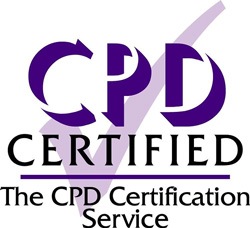How accessible will your business be in 2024?

As we enter into a new year, many companies will be looking for ways to improve inclusivity and become a more accessible organisation. As with any planning, it’s always beneficial to take stock by measuring how inclusive you currently are, as this will help you identify areas of strength/ weakness, allowing you to understand where your greatest efforts should be.
Here are a few ideas for conducting a basic audit on how accessible your organisation is, with a focus on environment, culture, recruitment and people.
- Assess your space
One of the best places to begin an inclusivity audit is by assessing your environment. Take a tour of all areas, entrances, exits and different features in the building. Do the stairs obstruct certain parts of the office block? Do all routes offer access for wheelchair users? How wide are doorways? Are entrances and signposts easily visible/readable? Is the reception a height that excludes wheelchairs? Is there a fire exit plan for people with disabilities? Are there handrails on both sides of the stairs? Do all tables accommodate wheelchair users. Is your reception area busy and loud – if so, maybe you should offer a counter loop for people who have hearing impairments? Do you have accessible parking?
Considering every area of the building and all forms of disability will put you in a good place for understanding the requirements for an inclusive physical transformation.
- Consult your people- and capture their feedback
If you want a clear understanding of how inclusive your business is from a cultural perspective, there’s no better place to start than by talking to your people. They will provide you with the most valuable data for an inclusivity audit. Ask them how they feel about disability, consider questions around disclosure, whether they feel the workplace offers enough support, and above all how you could improve. You may want to make the surveys anonymous to ensure the staff can speak openly.
Try to gain an understanding of whether your staff are a part of the 67% of the population that feel awkward when speaking to people with disabilities (SCOPE). If they are managers- ask how they feel about line managing a staff member with a disability- Could they benefit from some guidance?
Your findings may lead you to an understanding that there is a strong need for better awareness of disability. In which case, disability training should definitely be sought. This undertaking is often the first, but also the most important step when creating a more inclusive culture.
(Follow this link to see our upcoming dates for online training).
- Recruitment
If you are creating an accessible environment and developing an inclusive culture, then you will want to create a barrier free process for people with disabilities to gain employment with your firm.
Ask yourself whether your advertisements are truly inclusive. Can they be read and navigated in several different formats to accommodate as many different disabilities as possible? For example, those who use screen readers? Are accessible features such as a large print availability, dyslexia friendly options and plain text versions available?
Do your external advertisements shout about the fact that the company welcomes candidates with a disability? Does your social media use ‘alt text tags’ so that technology used by people with sight impairments can access audio descriptions? Consider your interview process and whether you offer candidates help if they have specific needs, parking instructions or different venues if you are interviewing from a floor other than ground.
Auditing all these aspects and changing your recruitment process will make a huge difference in your inclusive endeavours.
- Undertake a website check
Do people with disabilities have a barrier free experience when visiting your website? If you aren’t certain, then undertake an accessibility audit. You can do this in a number of ways, from using various scanning tools that allow you to ascertain whether there are issues with colours, missing alt text, and other inaccessible forms, to gaining a more comprehensive review of your website, apps and digital services, by a third party of experts like, AbilityNet
- Get help
Of course, if you want to delve deeper in your analysis about the diversity and inclusivity in your organisation, you could consider a third-party consultant like Bascule Disability Training, to help you develop a companywide audit. This will provide a whole new perspective. As well as benefitting from the evaluation of an outsider, a professional consultant will be able to gain a better understanding of where you stand culturally, as any research conducted with staff is likely to be based on more honest feedback.
After you have audited and you begin to put an inclusive strategy in place, always remember that the process of being accessible is ongoing and that efforts must continue in order to be maintained. There will always be new ways to enhance your accessibility and develop inclusivity. Set KPI’s and goals and assess them quarterly, ensure that training is refreshed and updated regularly. Make disability awareness a part of new staff on-boarding training so inclusivity is embedded in the ethos of the business, and create forums, steering groups and have conversations with staff with disabilities about progress, and areas of improvement.
As your accessibility grows celebrate your successes and make sure your efforts to be an inclusive organisation are seen by all.
Chris Jay, Managing Director- Bascule Disability Training
To book a 2024 training date- FOLLOW THIS LINK for our online training page




